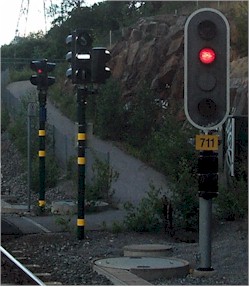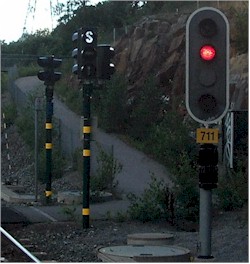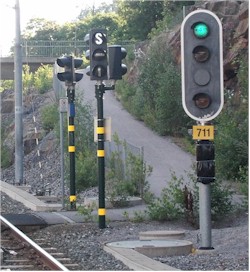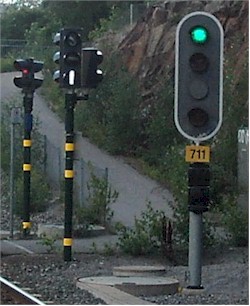




So did you ever contemplate being a subway driver on Stockholm's famous Tunnelbana? OK, here's lesson no. 1:
On (normal road) intersections, the public transport signals (i.e. those used for streetcars or buses) are wired just like standard traffic lights. But in order to prevent motorists from confusing them with their traffic lights, rather than using a red light for stop, they display an "S" (stop), and instead of green and amber lights, horizontal and vertical bars are used.
In this station, the platform is between the two tracks, and at one one end of the platform you
have a level crossing for travellers wishing to exit this way.
The exit signal guards the next block, and the level crossing is guarded by a signal of
the type that is standard for public transport.
Since the two signals are not interlocked, you may meet any of the following aspects, please answer the question in which of these situations you may proceed:
 |
The block signal shows red while the crossing signals indicate that it is safe (for the train) to pass the crossing. |
 |
The block signal is still at stop, while the crossing signal displays the equivalent of a street stoplight showing amber: Prepare for red. |
|
Now both signals show stop. |
 |
The previous train has cleared the block, so the signal shows 'clear'. Since the same aspect (i.e. clear) is shown to the pedestrians, the streetcar signal is still at "S" (i.e. stop). |
 |
The block signal is still at clear, and the streetcar signal shows a vertical bar, equivalent to a green traffic light. |
 home home |
 foreign signals index foreign signals index |
 email email |
 Swedish signals Swedish signals |
 Spanish signals Spanish signals |